7 Interesting Cultural Facts and Traditions of Lampung, from Tapis Lampung to Nuwo Sesat
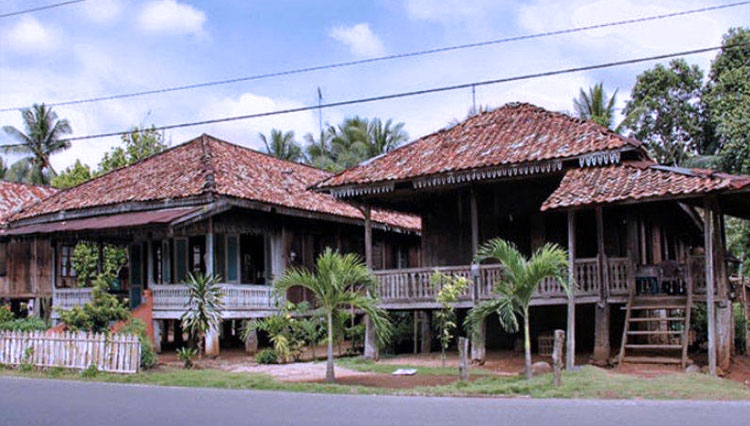
TIMESINDONESIA, JAKARTA – Lampung is a province in Indonesia that has become world-famous. This province offers many interesting tourism attractions and unique cultures and traditions to learn. Lampung is known for its conservation center for elephants and the scrumptious culinary of Seruit. Here are seven interesting cultural facts and traditions of Lampung that you should know.
1. Begawi Cakak Pepadun
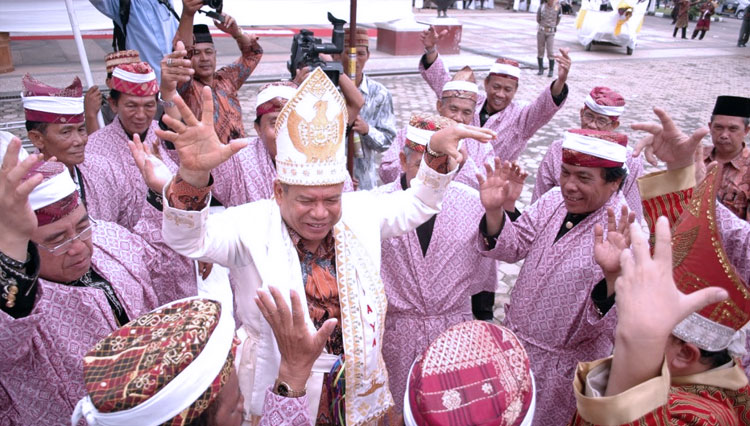 Begawi. (FOTO: R.Rara Pratama)
Begawi. (FOTO: R.Rara Pratama)
Advertisement
Begawi Cakak Pepadun is a traditional ceremony in Lampung to grant a title to an ethnic or tribe of Lampung that has done ‘begawi’ (work) from the cultural group of Lampung Pepadun.
The word ‘pepadun’ itself refers to the device used in ‘begawi’. This device is a wooden throne that symbolizes the social status in a family. Meanwhile, the word ‘begawi’ means ‘working’.
For the society in Lampung Pepadun, Begawi Cakak is a mandatory ceremony for someone before they are granted a status as a ‘penyimbang’ (this status is granted to the eldest son in the family). This status will be granted by the adat leaders.
Begawi Cakak Pepadun marks the difference between the cultures of the society in Lampung Pepadun residing in the central area and Lampung Saibatin in the coastal area of Lampung.
This grand ceremony becomes the characteristic of Lampung Pepadun. Everyone has the chance to be granted a status by performing this ceremony.
Those who want to perform this ceremony are required to pay some amount of money and offer some buffaloes, depending on the level of the status granting. The higher the social status, the more amount of money and buffaloes that should be given.
2. Tapis Lampung
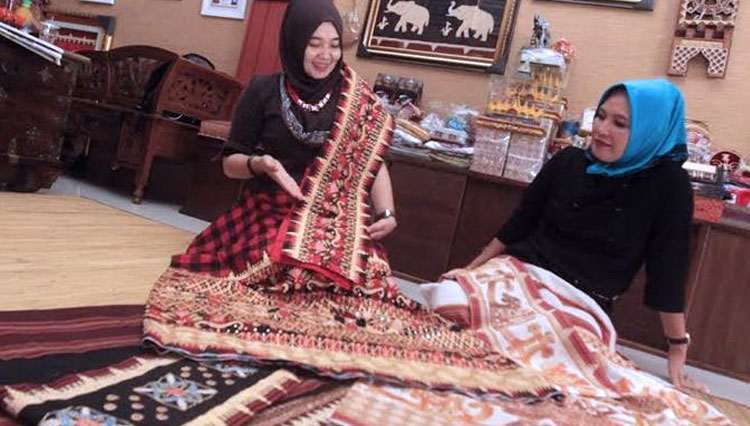 Tapis Lampung. (FOTO: Tribun Lampung/ Okta Kusuma Jatha)
Tapis Lampung. (FOTO: Tribun Lampung/ Okta Kusuma Jatha)
Tapis is a traditional weaving style from Lampung that symbolizes the alignment between the people’s life and their surroundings or God.
This cotton cloth is woven with the perfect waving skills. Traditionally using variation of motifs, this cloth represents the development of the society.
Tapis is usually embroidered with warped and couched gold thread. The motifs can be various, from Batik Lampung to any traditional embroidery motifs of Lampung.
This cloth is usually worn by Lampungese women. When worn, it forms a cylinder around the wearer’s legs. However, moving along with the times, Tapis can also be used as a shawl or decorative garment on upper cloth.
This cloth can range in price according to the intricacy. For example, the handwoven Tapis starts from IDR 600,000.
Meanwhile, the machine-woven cloth is relatively cheaper, starting from IDR 150,000.
3. Way Kambas National Park
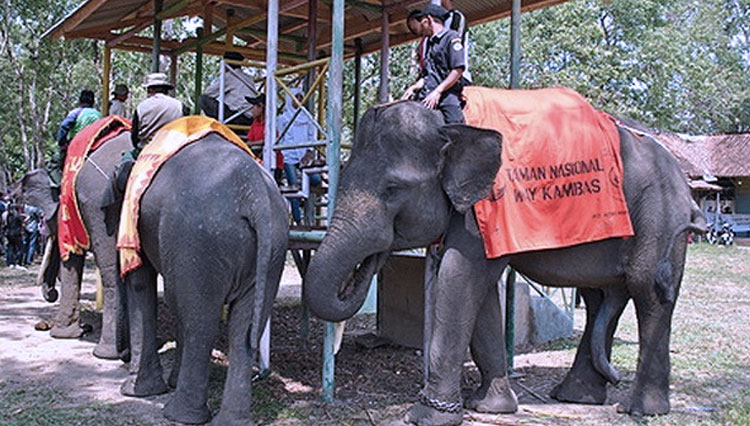 Taman Way Kambas. (FOTO: newslampungterkini.com)
Taman Way Kambas. (FOTO: newslampungterkini.com)
Way Kambas National Park is located in Lampung, in Raja Basa Lama, Labuhan Ratu sub-district, East Lampung, to be exact. This national park is known as an elephant conservation center.
Way Kambas National Park is famous for its Sumatran elephant that is indigenous to Sumatera Island.
This landscape covers around 125,000 ha of meadow, bushes, and coastal forest.
Way Kambas National Park is the first elephant school in Indonesia since 1985.
This conservation center also has International Rhino Foundation that functions to protect the Sumatran rhino which is critically endangered. Way Kambas National Park is not only the conservation center of Sumatran elephants, but also the sanctuary for other endangered species, such as honey bears, Sumatran rhino, tiger, sambar deer, Asian golden cat, and so on.
This national park has been declared as ASEAN Heritage Park. This declaration appointed Way Kambas National Park to be the 4th ASEAN Heritage Park in Indonesia and the 36th heritage park in Southeast Asia.
Taman Way Kambas is open for public on 8 a.m. to 6 p.m. The entrance fee starts from IDR 7,000 for one person to IDR 10,000 for four-wheeled vehicle. The visitors can ride the elephants by paying the retribution fee for IDR 20,000 for a 50-to-100-meter walk. It is possible for two persons to do an elephant ride that will be guided by a mahout trainer.
4. Seruit
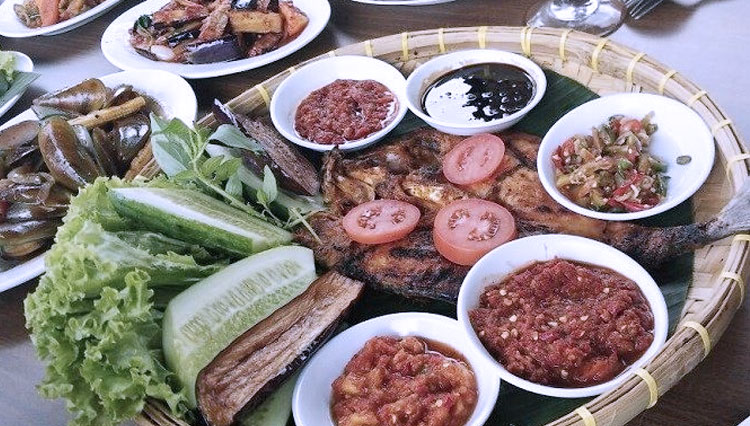 Seruit (FOTO: lampungpro.com)
Seruit (FOTO: lampungpro.com)
Seruit is one of the favorite staple dishes in Lampung Pepadun. Seruit comes from the word ‘nyeruit’ that means ‘doing activities together’.
Just like the habit of Indonesian people in common, Lampungese people also like to gather with their families and neighbors. Usually, they serve Seruit in traditional, religious events, or in a wedding ceremony.
Seruit consists of grilled fish (usually they use freshwater fish), such as Belida (Chitala), Lais (Glass Catfish), Baung (Hemibagrus), sambal, cucumber, grilled or fried eggplant, and tempoyak (fermented durian). All of this ingredients are mixed with fish gravy (Baung or Patin).
They usually add some side dishes, such as pepes ikan (roasted fish in banana wrappings), fried tempe, fried tofu, gulai taboh (coconut milk curry filled with seafood and vegetables in it), and steamed veggie platter.
5. Sai Bumi Ruwa Juai
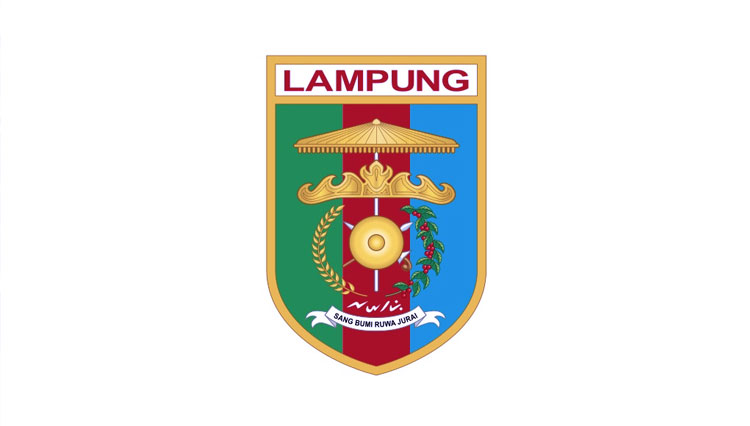 Semboyan lampung sang bumi ruwa jurai. (FOTO: wikipedia.com)
Semboyan lampung sang bumi ruwa jurai. (FOTO: wikipedia.com)
“Sai Bumi Ruwa Jurai” is a motto of Lampungese society, which means ‘one earth, two cultural traditions”.
Sai Bumi Ruwa Jurai is also the folksong of Lampung that uses Lampungese language in its lyrics. This song was created by Syaiful Anwar.
The word ‘Sai Bumi’ means ‘one earth’ referring to Lampung that stretches from Ranau Lake (the border that separates Lampung and South Sumatera), passes through Way Kanan, to the coast of Java Sea (located around the coastal area of South Lampung).
This song shows the abundance of natural resources that can be found in Lampung, especially peppers and cloves. Moreover, Sai Bumi Ruwa Jurai is a symbol of the diversity of ethnics and cultures in Lampung.
6. Krakatoa
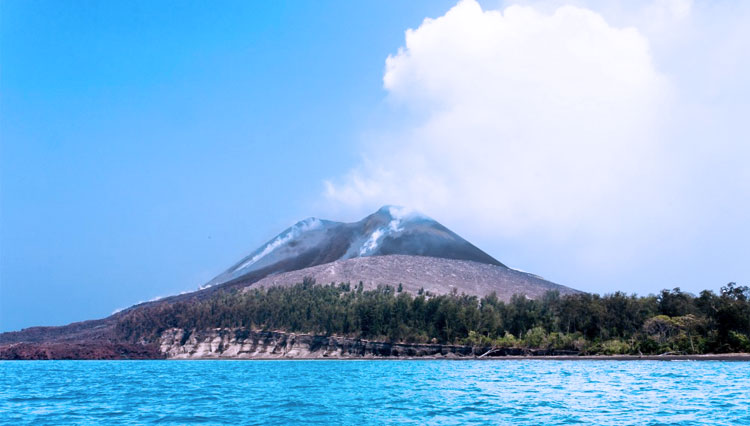 Gunung krakautau. (FOTO: wikipedia.org)
Gunung krakautau. (FOTO: wikipedia.org)
Krakatoa is a historical caldera nestled in Rakata Island in Sunda Strait, South Lampung.
The history of this caldera was written in a book called Pedalangan Pustaka Raja Purwa. It tells the first eruption of Krakatoa in 416 AD.
According to the story in this book, Krakatoa used to be a volcano of which height reached up to 2,000 meter above the sea level and the circumference reached up to 11 km. After 200 years in dormant, this volcano is active again from 20 May 1880 to 26 August 1883.
On 27 August 1883, this volcano had its biggest eruption. After 40 years, in 1927, this volcano became a small volcano that is called as Anak Gunung Krakatau.
This volcano has grown so fast and it can erupt anytime. Krakatoa is now a challenging tourism destination.
7. Nuwo Sesat
xxxxx
Nuwo Sesat is a traditional house of Lampung that functions as a meeting place for the ‘purwatin’ (adat leaders) and the ‘penyimbang’ (the status given to the eldest son in a family) when they are having a discussion.
Nuwo Sesat is also known as Balai Agung. Physically, Nuwo Sesat belongs to the type of house on stilts. The construction is usually made of wooden boards and stone foundation.
Initially, Nuwo Sesat has thatched roofs. However, nowadays, it uses roof tiles to adjust to the changing environmental condition.
Spend some time to visit Lampung and learn more about their cultures and fascinating traditions. (*)
**) Ikuti berita terbaru TIMES Indonesia di Google News klik link ini dan jangan lupa di follow.
| Publisher | : Rizal Dani |

